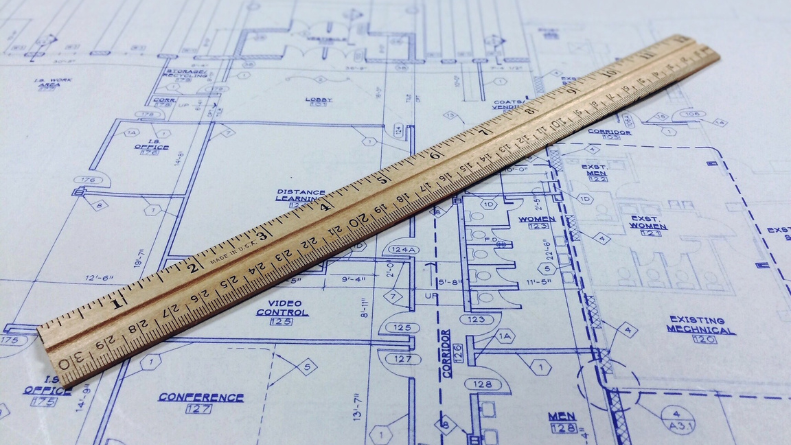The Snagging Solution Checklist
The New Build Phenomenon
The UK is in the midst of a housing revolution. From the bustling heart of London to the serene landscapes of the Lake District, the horizon is dotted with cranes and scaffolds, painting a vivid picture of progress. New build homes are mushrooming everywhere, offering a tantalising proposition for homebuyers and investors alike.
These constructions promise contemporary design and the latest in-home technology. They encapsulate modern-day living, melding urban aesthetics with comfort. The appeal is understandable; who wouldn’t want a home crafted to perfection, untouched and untainted by previous owners?
Yet, as with everything new and glittering, there’s a hidden side to this phenomenon. While these homes appear perfect on the surface, the reality can sometimes be different. And that’s where the importance of due diligence, in the form of a snagging list, takes centre stage.
What Exactly is a Snagging List?
You’re handed the keys to your brand-new home. The excitement is palpable. But as you venture through the rooms, you notice a slightly misaligned door, a chipped paint section, or perhaps a leaking tap. These might seem trivial, but when accumulated, they can mar the experience of a new home. Enter the snagging list.
Imagine a comprehensive document, a checklist if you will, that acts as a guardian of your home investment. It meticulously details every aspect of your property, identifying defects, inconsistencies, and areas of concern. This list serves as a tangible record, ensuring that builders rectify these “snags” before you fully settle in.
The concept of the snagging list isn’t about fostering mistrust with builders or developers. On the contrary, it’s about collaboration and ensuring standards. It’s a protective measure, guaranteeing that your new home is truly the sanctuary you envisaged.
FJP Investment CEO, Jamie Johnson, once aptly remarked, “Investing in a property isn’t just about bricks and mortar; it’s about ensuring every brick is laid with precision, and every drop of paint applied with care.” This sentiment resonates deeply with the ethos behind the snagging list, affirming its importance in the homebuying process.
Components of an Effective Snagging Checklist
In the world of property, details matter. When investing a significant sum in a new build home, ensuring its quality is paramount. Each corner, every fixture, and all the finishes should be up to the mark. This is where the essential nature of the snagging checklist comes into the picture.
The snagging checklist isn’t just any list. It is a meticulous compilation, crafted with precision, that delves deep into the fabric of your new home. From the foundational elements to the ornate intricacies of interior design, the list is exhaustive, ensuring that every part of your property aligns with the vision you had in mind.
However, the mere existence of a checklist isn’t enough. Its efficacy depends on the components it covers. Ensuring that it captures both the grand architectural aspects and the minute design details is crucial. So, what should an effective snagging checklist comprise? Let’s delve deeper.

Professional vs DIY: Who Should Do the Inspection?
The allure of inspecting one’s own home is undeniable. The prospect of walking through each room, taking note of the spaces you’ve invested in, feels personal and engaging. After all, no one knows what you want better than you do, right? This sentiment drives many to opt for a DIY approach when it comes to snagging inspections.
However, the realm of property construction and interiors is vast, filled with nuances that may escape the untrained eye. A misaligned tile, a hidden mould patch behind a fixture, or an electrical glitch may not be evident to someone without the requisite knowledge.
On the other hand, professionals, particularly snagging surveyors, come armed with years of expertise. Their trained eyes spot inconsistencies and defects that might go unnoticed by the average homeowner. Moreover, they have a structured approach, ensuring that every aspect of the house is inspected systematically.
Yet, this doesn’t entirely negate the value of a DIY approach. There’s an emotional connection when homeowners inspect their properties. They might notice aesthetic issues or functional mismatches that a professional, focusing on technicalities, might overlook.
So, the question remains: who should undertake the inspection? Perhaps the answer lies in a balanced approach. A combination of personal inspection, followed by a professional’s oversight, might just be the golden middle ground, ensuring that your new home is truly devoid of snags.
The Power of Negotiation and Dispute Resolution
Entering the world of property can sometimes feel like navigating a minefield of details, regulations, and unforeseen challenges. But among the most crucial skills one can equip themselves with in this realm is the art of negotiation. Why, you ask?
New build homes, despite their glossy finishes and modern allure, aren’t always free of defects. These “snags” can range from minor aesthetic flaws to major structural issues. Addressing these concerns with builders and developers requires tact, clarity, and effective communication.
However, even with the best negotiation skills, disagreements can arise. The builder might view a defect as a minor discrepancy, while the buyer sees it as a major concern. It’s in these moments that dispute resolution becomes vital. Instead of escalating conflicts, an understanding of dispute resolution mechanisms can help find common ground, ensuring that both parties reach a satisfactory agreement.
Legal advice plays a pivotal role here. Before finalising a purchase, consulting with experts can help buyers understand their rights, the builder’s obligations, and potential pathways if disagreements emerge. Remember, in the world of property, being proactive rather than reactive can make all the difference.
The Value Proposition: New Build vs Older Properties
At first glance, the choice might seem simple. Newly constructed homes offer the allure of modern design, state-of-the-art amenities, and the comfort of being the first occupant. The fresh paint, untouched appliances, and unblemished floors have an undeniable appeal. But is that the whole story?
Older properties, on the other hand, come with a charm that’s hard to replicate. They whisper tales of bygone eras, exuding character at every turn. Architectural details, mature gardens, and lived-in warmth can be equally enticing, especially for those with an appreciation for history and heritage.
Yet, it’s not just about aesthetics. From an investment standpoint, older homes might sometimes offer more value. They could be located in established neighbourhoods, offer larger plots of land, or present renovation opportunities that can significantly boost their market value.
Furthermore, older homes might come with the added advantage of fewer immediate snags or defects, given that any such issues would likely have been addressed over the years. However, they might also hide latent issues that require extensive (and expensive) repairs.
So, which is the better investment? The answer is as varied as individual preferences. It’s essential to weigh the pros and cons, factoring in both immediate appeal and long-term value.
Conclusion: Armed with Knowledge, Ready for Investment
The journey through the property market, with its twists and turns, can be exhilarating, challenging, and deeply rewarding. But as with any journey, preparation is key. Armed with a robust snagging list, an understanding of negotiation nuances, and a clear vision of what you want, you’re not merely stepping into the world of property; you’re making an empowered leap.
Whether it’s the untouched allure of a new build or the timeless charm of an older property, knowing what to look for and how to approach potential challenges makes all the difference. With knowledge as your compass, the world of investment doesn’t seem quite as daunting, does it? The path is clear, the roadmap is set, and you’re ready to embark on one of the most fulfilling adventures of your life.
ARE YOU READY TO START INVESTING?
Subscribe to our mailing list now for exclusive deals, investment guides and the latest information from the property market.







